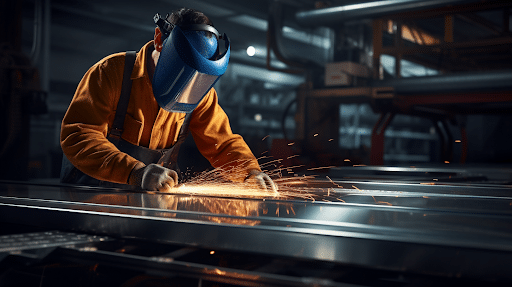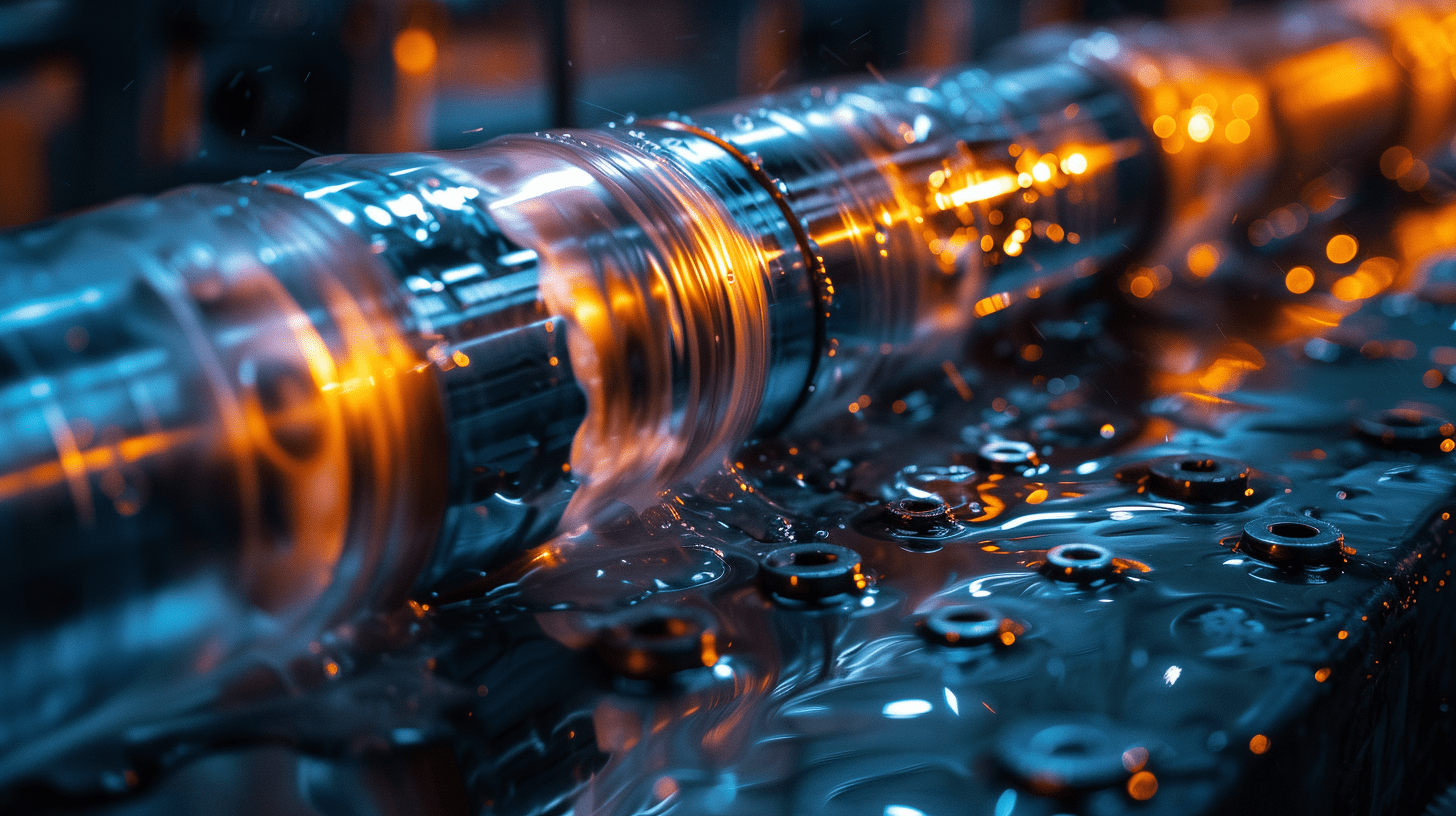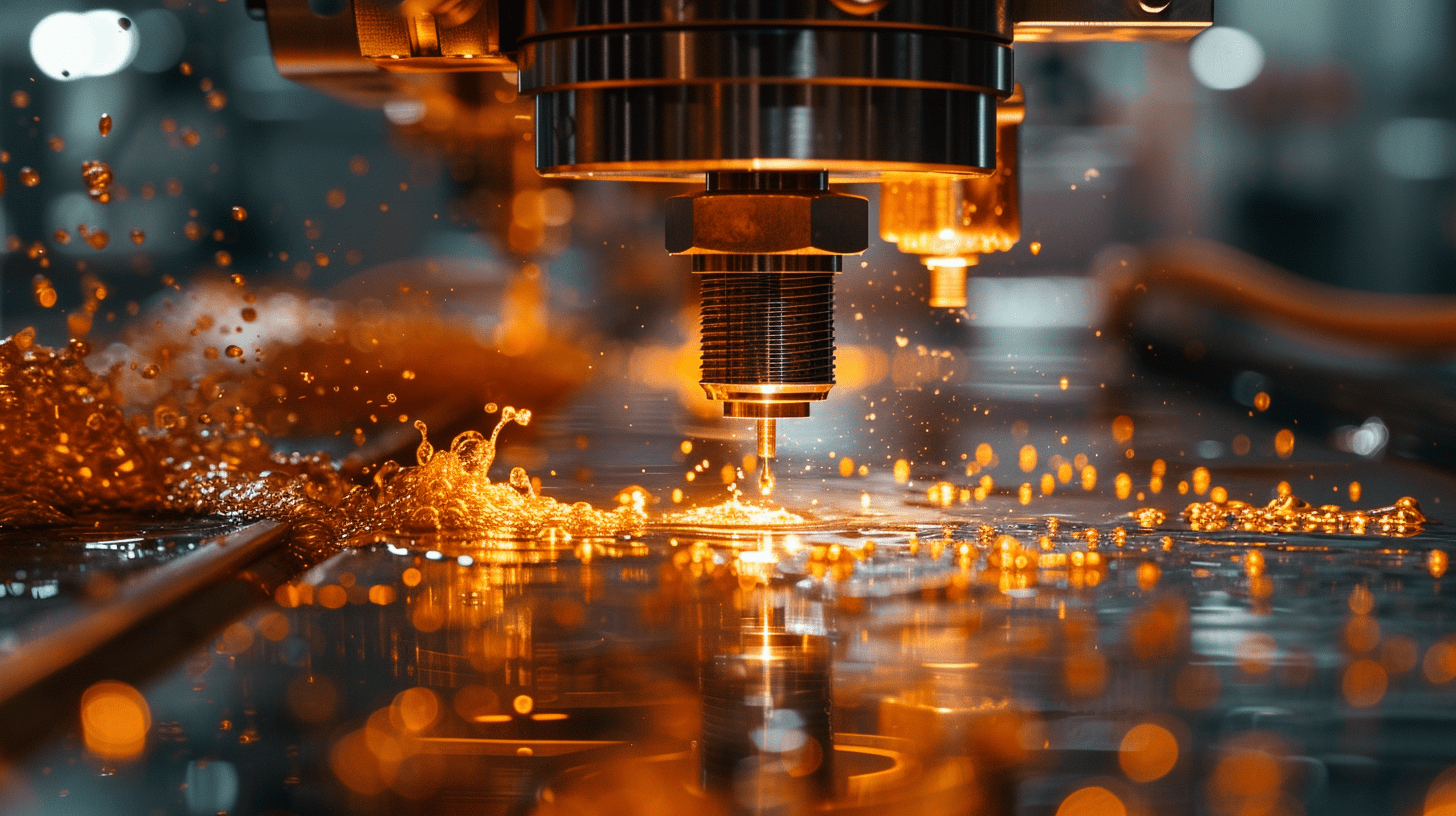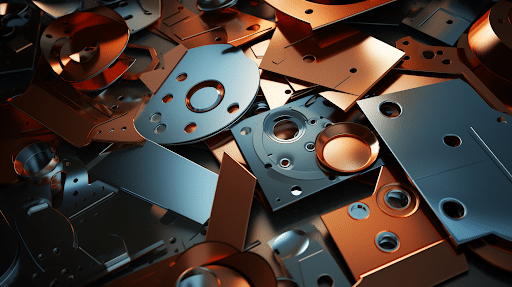The success of your metal fabrication project depends on various factors, including the type of metals, the intended application, and desired qualities like strength, resistance, and finish. This guide explains the diverse sheet metal fabrication processes available in the contract manufacturing industry, ensuring you make informed decisions for your specific needs.
Choosing the Right Sheet Metal Fabrication Process | 5 Key Factors That Will Influence Your Decision
The right sheet metal fabrication process is pivotal to the success of your project. Careful consideration of the metal type, fabrication technique, finishing options, and production requirements will guide you in making informed decisions.
1. Types of Metals and Their Properties
Before delving into the intricacies of sheet metal fabrication, it’s essential to grasp the properties of different types of metals. Each metal has distinct physical and chemical properties, such as tensile strength, corrosion resistance, and conductivity, influencing its suitability for specific applications.
Common materials include:
- Carbon Steel: Carbon steel is commonly processed through methods like laser cutting, plasma cutting, and machining for intricate designs, while press brake bending and welding are effective for shaping and assembling components.
- Stainless Steel: Known for its corrosion resistance, stainless steel is often processed through laser cutting, waterjet cutting, and precision machining for accurate shapes without compromising its corrosion-resistant properties.
- Mild Steel: Mild steel is versatile and can be efficiently processed through various methods such as laser cutting, press brake bending, and welding, making it adaptable to a wide range of fabrication techniques.
- Aluminum: Valued for its lightweight properties, aluminum is commonly processed through methods like laser cutting, waterjet cutting, and CNC machining for precision, while press brake bending ensures accurate shaping without compromising its inherent properties.
2. Material Thickness and Design Requirements
In the design phase, consider the sheet thickness required for your project. Different processes accommodate various thicknesses, so understanding your design requirements is crucial. Additionally, consider factors like bend radius, which impacts the ease of bending and the final appearance of the finished product.
3. Volume Production and Cost
When considering volume production and cost, it’s essential to align the manufacturing processes with the project’s scale. Laser cutting, efficient for small batches, ensures precision in intricate designs. For mass production, methods like press brake bending prove more economical due to faster cycle times. Evaluate the cost-effectiveness of each method based on the production runs required, balancing efficiency with economies of scale to optimize overall project costs.
4. Quality Standards and Tolerances
Adhering to stringent quality standards and tolerances is paramount in the fabrication process. Select a method that aligns with the precision requirements of your industry. For precision components, meeting tight tolerances is crucial, and the chosen fabrication process must seamlessly integrate with the dimensional specifications outlined in your design.
5. Assembly Requirements
when selecting a fabrication method, it is crucial to consider assembly requirements, especially for projects involving intricate assemblies. Opt for a method that aligns with and facilitates the intended assembly process. Compatibility with welding, fastening, or other joining methods should be a key consideration to ensure ease of putting the pieces together. By strategically choosing a fabrication method that integrates well with assembly requirements, you enhance efficiency, reduce assembly time, and contribute to the overall success of your project.
Sheet Metal Fabrication Processes
Laser Cutting
In the world of precision sheet metal fabrication, laser cutting stands as a beacon of innovation. Its versatility, precision, and ability to handle intricate designs make it an invaluable tool for manufacturers across industries. As technology continues to advance, laser cutting remains at the forefront, driving the evolution of precision manufacturing and contributing to the creation of high-quality products.
Unparalleled Versatility
Laser cutters stand out due to their adaptability across various sectors. Whether in aerospace, automotive, electronics, or custom manufacturing, laser cutting proves to be a reliable and efficient solution. Its ability to cut through a multitude of materials, including metals, plastics, and composites, makes it a go-to choice for fabricators dealing with diverse materials.
Cutting Complex Shapes with Tight Tolerances
One of the key strengths of this cutting-edge tool lies in its ability to precisely cut complex shapes with tight tolerances. This makes it an ideal choice for applications where intricacy and precision are non-negotiable, such as in the production of intricate components, prototypes, or parts for high-tech devices.
Clean Finishes for Aesthetic Appeal
Beyond its precision, laser cutting delivers clean finishes that contribute to the overall aesthetic appeal of the final product. The focused laser beam ensures minimal material distortion and reduces the need for extensive post-processing, resulting in a polished appearance. This is particularly crucial in industries where the visual aspect of the finished product is as important as its functionality.
Ideal for Intricate Designs and Batch Production
Laser cutting is well-suited for translating intricate designs into tangible products. Its high level of accuracy allows for the replication of detailed patterns and designs, catering to the demands of product designers and engineers. Additionally, the efficiency of the process enables the cost-effective production of both small batches and large-scale manufacturing runs.
Water Jet Cutting
Water jet cutting is a dynamic method in material fabrication. Its ability to handle an extensive range of materials, precision in intricate designs, and cost-effectiveness make it a valuable tool for manufacturers across industries. As custom sheet metal fabrication technology continues to advance, waterjet cutting continues to carve its path as an essential process.
A Unique Approach
Water jet cutting involves the use of a high-pressure stream of water, often mixed with abrasive materials, to cut through various materials. This method is renowned for its versatility, allowing for the cutting of materials that might be challenging with other methods.
The Role of Abrasive Materials
The inclusion of abrasive materials allows waterjet cutting to tackle harder materials, making it an ideal solution for applications that involve working with metals with varying levels of hardness. This makes waterjet cutting a preferred method in industries that demand adaptability.
Precision in Intricate Designs
Waterjet cutting excels in handling intricate designs with a high level of precision. The focused jet stream allows for intricate patterns and detailed cuts without the risk of material distortion or heat-affected zones. This precision is particularly advantageous in industries where intricate designs are a key component, such as in the creation of custom parts, artistic components, or specialized machinery.
Cost-Effective Solution for Custom Designs
The versatility and efficiency of waterjet cutting contribute to its cost-effectiveness, especially in the realm of custom designs. This flexibility makes it an attractive choice for industries where customization is a priority. Whether it’s a one-of-a-kind project or a small production run, waterjet cutting provides a viable solution without the need for complex tooling changes.
Bending and Forming Processes
Bending and forming processes bring flat sheets to life with three-dimensional precision. This method emphasizes achieving a uniform bend radius, especially through techniques like press brake bending, in which specialized equipment is used to apply force and create precise, uniform bends in the metal along predetermined lines.
As industries demand increasingly complex designs, the importance of these bending processes in meeting those challenges becomes ever more apparent. Nowadays, bending and forming processes are fundamental steps in sheet metal fabrication, playing a pivotal role in transforming flat sheets into intricate and functional three-dimensional shapes.
Shaping Sheet Metals with Precision
Bending processes revolve around the art and science of shaping sheet metals into desired forms with unprecedented accuracy. The precision achieved in these processes is crucial for meeting design specifications and ensuring the functionality of the final product.
Suitability for Complex Geometries and Assemblies
The ability of bending processes to create uniform bend radii makes them highly suitable for complex geometries and intricate assemblies. Components requiring curves, angles, or intricate shapes can be accurately produced, ensuring that the final product meets not only aesthetic requirements but also functional specifications.
Powder Coating and Finishing Options
In the post-fabrication phase, the choice of finishing options significantly impacts the quality and visual appeal of metal products. Powder coating, with its durable nature, corrosion resistance, and cosmetic coating capabilities, has become a go-to solution in various industries. As manufacturers seek to balance functionality with aesthetics, powder coating stands as a reliable and versatile finishing option, elevating the overall quality and longevity of metal products in construction, appliances, and beyond.
The Significance of Finishing Options
Post-fabrication, the consideration shifts to not only enhancing the visual appeal of the metal product but also to contributing to its overall longevity. Choosing the right finish is a critical decision, impacting factors such as corrosion resistance, appearance, and the ability to withstand environmental conditions.
Enhancing Corrosion Resistance
One key advantage of powder coating is its ability to enhance the corrosion resistance of the metal surface. Powder-coated surfaces create a protective barrier, reducing the risk of corrosion and extending the lifespan of the metal product. This is particularly valuable in industries where exposure to moisture, chemicals, or harsh weather conditions is common.
Aesthetic Appeal
Powder coating goes beyond functionality; it adds an aesthetic dimension to the finished product. The process allows for a wide range of colors and finishes, from matte to glossy, providing manufacturers the flexibility to meet diverse design preferences with ease. This cosmetic coating aspect is especially crucial in industries like construction and appliance manufacturing, where visual appeal is a significant factor in consumer choices.
Common Application in Various Industries
Powder coating has found its place in a variety of industries due to its versatility. From construction materials to appliances, automotive components to outdoor furniture, the appeal of powder-coated finishes transcends specific sectors. Its widespread adoption is a testament to its ability to deliver both durability and a polished appearance.
Key Factors to Consider to Choose a Material for Sheet Metal Parts
Sheet Metal Manufacturing Services
At Alpha Contract Manufacturing Group, precision is our hallmark. Whether it’s laser cutting, water jet cutting, welding, or powder coating, our state-of-the-art processes ensure optimal efficiency and quality across the board. From plastics manufacturing to specialized services like industrial painting, we bring years of expertise and cutting-edge technology to every project.
We distinguish ourselves as an industry leader in metal fabrication processes, showcasing a formidable ability to deliver precision and efficiency. Specializing in a comprehensive range of metal processing techniques, we stand as a reliable partner for clients with diverse needs. The utilization of state-of-the-art equipment, coupled with a team of skilled professionals, ensures that we excel in meeting the intricate demands of metal fabrication.
Frequently Asked Questions
Why is stainless steel commonly used in metal fabrication?
Stainless steel is a preferred choice due to its remarkable corrosion-resistant properties. In the metal fabrication industry, stainless steel is known for providing durability, longevity, and a sleek appearance, making it ideal for various applications.
What benefits does laser cutting offer for sheet metal components?
Laser cutting ensures precision and versatility in shaping sheet metal components. The process allows intricate designs, and minimal material waste, making it a preferred method for achieving high-quality results.
What role does tensile strength play in metal fabrication?
Tensile strength is crucial for determining a material’s ability to withstand forces without permanent deformation. We carefully select materials with optimal tensile strength to ensure the durability and structural integrity of fabricated metal products.
Can Alpha Contract Manufacturing apply paint to metal surfaces as part of the fabrication process?
Yes, we offer painting services to enhance the aesthetic appeal of metal components. The paint application is meticulously executed to adhere to industry standards, providing both a protective layer and a visually appealing finish.
SEO GLOSSARY›
